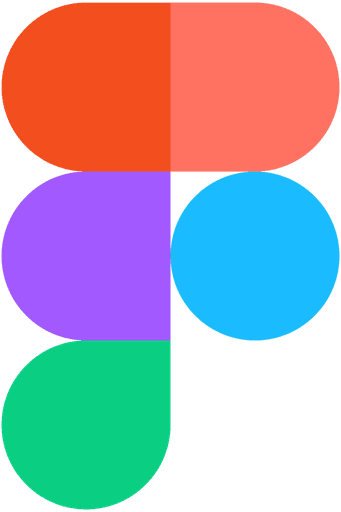Wait! Smart Stanchion and Companion App
Wait! is a Internet of Things (IoT) device that helps groups of individuals plan their night out. Wait! consists of smart stanchions that leverage ultrasonic sensors to detect and calculate wait times for bars, clubs, and restaurants. These wait times are then sent to the Wait! mobile application, helping users make more informed decision on their night out.
Ann Arbor, MI
SI 612: Pervasive Interaction Design
UX Researcher & Designer
Nightlife & Entertainment
4 Months
Challenge
As part of our SI 612 class, our team was challenged with creating an IoT device in a domain space of our choice. Our team selected nightlife, and quickly discovered that many individuals find it difficult to logistically plan a night out both in their hometown or abroad. Our goal was to find a way to streamline the planning process and make users feel more informed and safe when planning their nights out.
Results
Wait! uses ultrasonic sensors to capture real-time queue data to help users better plan their nightly excursions. This queue information is sent to the Wait! companion mobile application.
The addition of social features and real time crowd data both enhances the nightlife planning process for patrons and provides actionable business insights for bar and restaurant owners.
18
Diary Log Entries
61
Survey Feedback Responses
5
Experience Prototypes Tested
Project Process
Initial Discovery
After conducting initial contextual inquiry by observing individuals who frequent bars and clubs. Our initial observation helped us scope or target user audience, young professionals between the age of 21 and 28.
Initially we brainstormed solutions that solve questions surrounding drink safety, but our subsequent research yielded some surprising results.
Multiple
9 Participants
21 Diary Entries
Google Forms
16 Days
Diary Study
We conducted semi-anonymous diary studies with 9 users. We wanted to keep some level of anonymity with the users because discussions of nightlife can occasionally be traumatic or embarrassing. The goal of these studies is to gain at least 2 diary logs, per person, to gain insights into nightlife experience, logistics, overall opinions, and safety.
We encouraged users to complete the diary within a day after going out. Luckily our initial research coincided with the University of Michigan's spring break, which gave us an opportunity to receive data from experiences outside of the Ann Arbor Area.
Survey
Our anonymous survey was deployed alongside the diary study to capture quantitative data about night life preferences, decision factors, safety, and spending. This data was used to contextualize our diary studies, leading to key insights for our final product.
We deployed the survey via Qualtrics and distributed it among the graduate student population at the University of Michigan.
Multiple
61 Responses
Qualtrics
16 Days
Research Insights
After conducting our diary log study and survey after two weeks, we compiled our notes and found 3 key insights. Notably, there were minimal insights when it came to drink safety. From this analysis, we identified 3 key opportunities:
Transportation: A location tracking device that helps individuals travel efficiently and safely.
Socializing & Keeping Track of Friends: Location tracking technology to notify attendances and departures.
Crowd management: Motion and activity tracking to inform users if areas are crowded.
Personas
User Journey & Empathy Maps
Wizard of Oz Prototyping & Testing
Using Emma as our primary persona, we transition to ideation various solutions to meet her needs. We did so using a speed dating matrix to assess various dimensions of the nightlife experience, including the commonly discussed activities in our research. We created 5 separate user enactments and corresponding solutions:
Coordinating Transportation
Crowd & Line Management
Budget Tracking
Keeping track of Friends
Coordinating group movement



After testing we arranged our observations into an affinity map, based on product type. We found that the smart stanchion generally received the most positive feedback and elected to move forward with it for our designs.
System Architecture
Final Prototype

Feature 1 - Ultrasonic Sensors
The Wait! Stanchion uses ultrasonic technology to detect crowd movement and obstruction outside of bars and clubs. Using the Particle Workbench, our team coded the ultrasonic sensors to display different colors, depending on if the sensors detected obstruction within a certain range.
Each stanchion will register obstructions and send this information to the Wait! mobile application. The stanchions will measure status in 15-minute intervals.
Feature 2 - Tracking Wait Time
Wait! App takes the information from the smart stanchions and presents users with real time wait time data based on specific locations.
This includes a dynamic Google Maps API feature for users to explore locations based on distance and rating.


Feature 3 - Coordinate with Friends
Wait! Also provides users with the ability to share locations and events with their friends. These locations can be shared externally or within the Wait! App.
If users are using the Wait! App, they can collectively vote for or against proposed locations based on location, reviews, and wait time.
Lessons Learned
Our experience with Wait! provided invaluable insights into research methodology and the development of IoT technology. As we pivoted from drink safety to line management, we learned the value of staying flexible when conducting research and, despite challenges collecting sensitive data, we did so without major issues or qualms from the participants.
Finally, we gained a better appreciation for the thought that goes in to developing IoT devices, from low fidelity designing, functional coding, to 3d printing models. These lessons and techniques are certainly something our team will carry forward in our future careers in product design.
Next Steps
Our next steps would be to ensure the ultrasonic can operate in a consistent manner. This would possibly involve upgrading the sensor itself. We would also want to run more thorough tests in real world scenarios on how the stanchions operate. This would help our team better understand specific wait times, rate of movements, and how we should specifically calibrate the stanchion reading distances.























